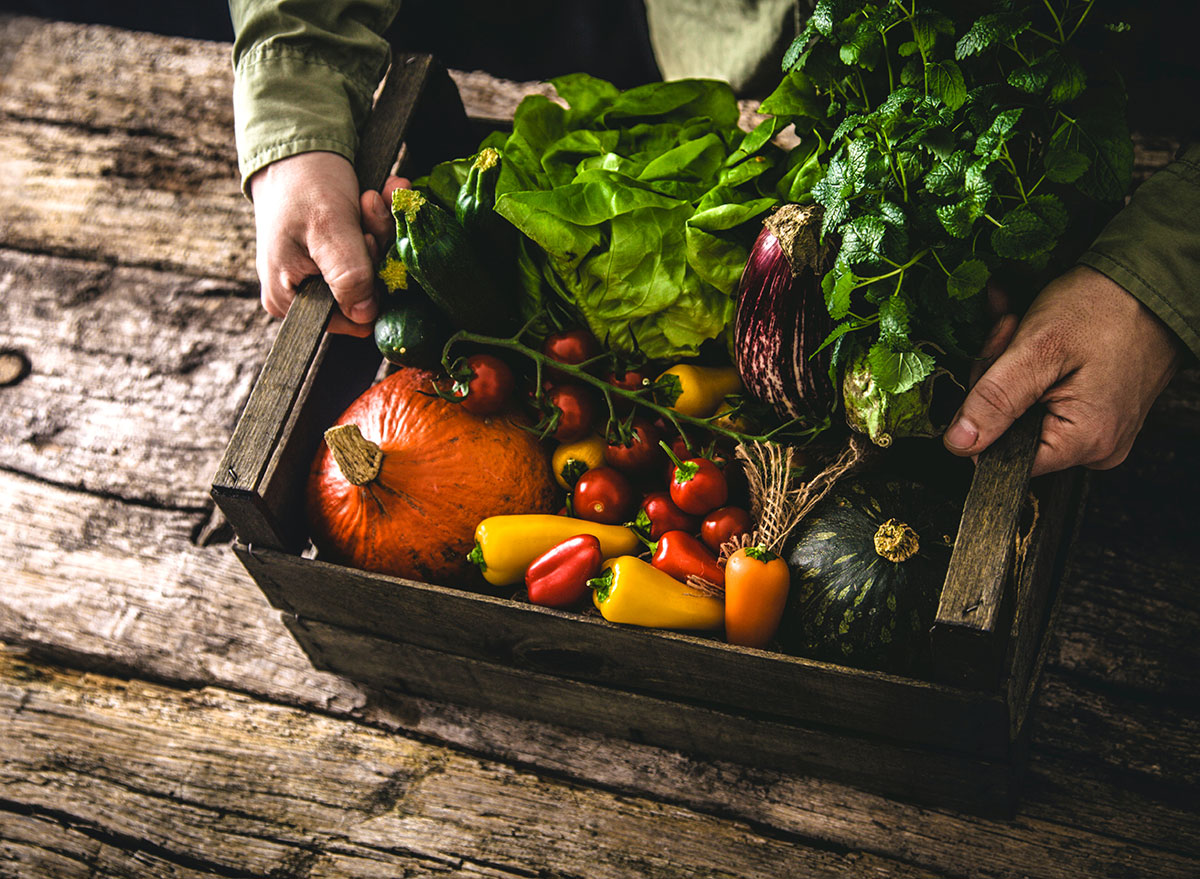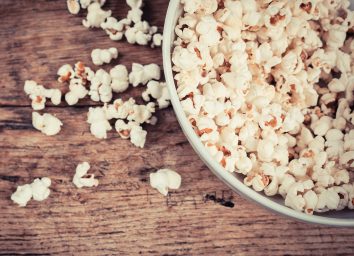What Is the Raw Food Diet? We Asked Experts About the Benefits and Risks

You have probably heard of the classic Welsh saying "an apple a day keeps the doctor away." While this proverb has no scientific backing, it is not too far from the origins of how the raw food diet began. The eating plan emerged when Dr. Maximillian Bercher-Benner began promoting the consumption of raw foods after he found eating raw apples cured his jaundice in the late 1800s. Since then, the diet took off in popularity and has stood the test of time.
From this starting point, the diet has twisted into a huge variety of shapes and sizes over the past century, coming to include and exclude different foods, depending on the time period. With such a long history, this diet immediately seems like a tried and true recipe for weight loss success.
So, could exclusively eating raw foods truly work, and if so, is it healthy in the long run?
What is the raw food diet?
In its current incarnation, the raw food diet seems to have straightforward eating requirements. In order to follow the diet, each follower should only consume food that has never been cooked in any way, processed, genetically engineered, irradiated, or exposed to insecticide or pesticide. In the case of many dieters, the term "cooked" implies that the food never exceeds 115 degrees Fahrenheit.
Foods you can eat
Because of the culinary limitations, most who try to follow this eating plan end up going vegan. However, through the semantics of the phrasing, dieters also may consume unpasteurized, raw dairy, and raw meat.
The diet encourages the consumption of the following foods:
- Fresh and dehydrated fruits
- Vegetables
- Sprouts
- Seeds
- Nuts
- Uncooked grains (lentils or chickpeas)
- Cold-pressed oils and fats
- Herbal tea
- Fresh juice
- Unpasteurized raw dairy
- Unpasteurized raw meat
Foods you can't eat
There is a full spectrum of foods you can't partake in if you want to pursue raw foods further. These include:
- Baked goods
- Cooked fruits
- Cooked vegetables
- Cooked and processed meats
- Cooked grains
- Roasted nuts and seeds
- Refined oils
- Table salt
- Refined sugars and flour
- Pasteurized juices and dairy
- Coffee
- Most tea
- Alcohol
- Pasta
- Any processed food like crackers
- Most frozen dinners
By excluding these items, the diet may severely undercut the USDA's daily recommended intake of calories.
Despite the lack of scientific evidence, the rationale behind not cooking food lies in the belief that heating and processing food depletes the vitamin content of food and can strip nutritional value out of meals. In order to get the most out of the diet, some research is required to determine which foods you should and shouldn't eat. To sort through the daunting pros and cons of the diet, we consulted Rachel Paul, PhD and RD from CollegeNutritionist.com.
What are the rewards of the diet?
While the raw food diet has little scientific backing, some of its claims that food loses some of its nutrition holds true.
"Some nutrients are present in higher quantities in raw foods versus cooked ones e.g. vitamin C and many B vitamins," says Paul. "Also, enzymes in food also deactivate in cooking over 117 degrees Fahrenheit."
While high heat does cause most enzymes to denature, many enzymes undergo this process naturally in any acidic environment and the process naturally occurs in our stomachs, regardless of whether the material is raw or processed.
In addition to these benefits, the diet encourages the consumption of high fiber foods, which can keep your hunger satiated for longer periods of time. By cutting out processed sugars and carbs, participants often lose a large amount of weight quickly, just because they slash their daily caloric intake.
Some studies have tried to gauge how the raw food diet affects weight loss. In a 2005 study published by the Department of Internal Medicine at Washington University School of Medicine, researchers monitored the weight fluctuations of 18 participants on a strict raw food diet and 18 participants on a balanced diet as a control group. After four years, the body mass index (BMI) and midsection fat were lower among those in the raw food group than the control group, and the results were considerable—the total body fat in the raw food group averaged out to 13.9 percent for men and 24.1 percent for women, compared with 20.8 percent and 33.5 percent among the average eaters.
What are the risks?
This amount of fat-burning is a double-edged sword, because participants lose weight at the cost of destabilizing their diet. In another study published by the Institute of Nutritional Science Justus Liebig University of Giessen in Germany, men lost an average of 21.8 pounds after switching to a raw diet and women lost an average of 26.4 pounds. Out of this group, 15 percent of men and 25 percent of women in the study lost enough fat to be considered underweight. In fact, 70 percent of women on the diet in the study experienced irregularities in their menstrual cycle and nearly 33 percent of women developed amenorrhea as a result of low body weight.
It seems like the detrimental effects of exclusively eating raw food outweighs any benefits.
You have a high risk of getting sick
"It's incredibly difficult to get all the nutrients you need from a raw food diet, especially if you're not eating animal protein and dairy," says Paul. "In addition, cooking actually kills harmful bacteria and microorganisms that may make you sick."
Certain foods like raw garlic or raw grain can contain the bacteria that causes botulism and even eating undercooked kidney beans allows a naturally-occurring lectin Phytohaemagglutinin to kill stomach cells, potentially resulting in death.
"Without meat and dairy at all in the diet, it's very difficult to get all of the nutrients your body needs for optimal function," says Paul. "However, cooking meat, for example, kills harmful bacteria and microorganisms that may make you sick, so it's in a person's best interest to heat it. Practically speaking as well, cooked food is often easier to chew."
It's not feasible for people in food deserts
Another major pitfall of the diet is the cost and accessibility of the food you need. One of the driving factors against the diet is the rise of food deserts. According to the American Nutrition Association, a food desert is defined as sections of a country that lack an adequate supply of fresh fruits, vegetables, and other whole foods for consumption. Today, 23.5 million American citizens live in a food desert and out of the total U.S. population, 11.1 percent face food insecurity on a daily basis. Due to the potentially high cost of the fresh produce you need to receive balanced nutrition, the prohibitive cost of the diet could initially make it impossible to follow. If you factor in the purchases of accessories like food dehydrators and blenders to assist you in preparing raw foods, you may be looking at spending upwards of $1,000 on kitchen appliances alone.
The benefits you receive by consuming vitamins in uncooked food might not even be worth the trouble.
You won't consume all the nutrients you need
"While some nutrients may be present in smaller quantities in a cooked meal, the benefits—killing any bacteria, ease of digestion, and the ability to get optimal nutrition from eating a variety of foods—greatly outweigh the costs," says Paul.
The diet also allows for a variety of "hidden trap" foods that seem healthy, but when consumed uncooked, especially in large quantities and over a prolonged period of time, all combine to make you more unhealthy than when you started your diet. Fruits and vegetables don't pack in enough carbohydrates, protein, and fat to keep you satiated on a long-term basis, and eventually, you will face a potential health breakdown.
"Severe weight loss, anemia, muscle loss, lack of the ability to concentrate, and lack of energy to exercise are all traps [if you] follow this type of diet," says Paul.
The most prominent shortcoming of the raw food diet comes in the form of the proper lack of nutrition inherent in the diet to function.
"There are two types of protein: complete proteins and incomplete proteins," says Paul. "Complete proteins contain all the amino acids needed for our bodies and muscles to function, and incomplete proteins that only contain some amino acids. Complete proteins are found in animal products. It is possible to mix and match incomplete protein sources to get all of the amino acids you need (from plant-based sources)—but since on a raw foods diet your food choices are so limited (even among plant foods—e.g. a person wouldn't eat raw beans, which, cooked, are a decent source of certain amino acids), it would be easy to get a protein deficiency, which is very dangerous."
Are there similar alternative diets?
Going vegan may be the most comparable alternative to the raw food diet if you want to gain some of the same benefits with less risk. "Vegan diets are similar—but more foods are available for protein, [like] cooked beans," Paul says. "Also, since veganism allows cooking, eating foods is safer (as cooking kills harmful bacteria)."
At the end of the day, it might be better to go vegan than to try the raw food diet, and Paul agrees. "I would not recommend this diet."








